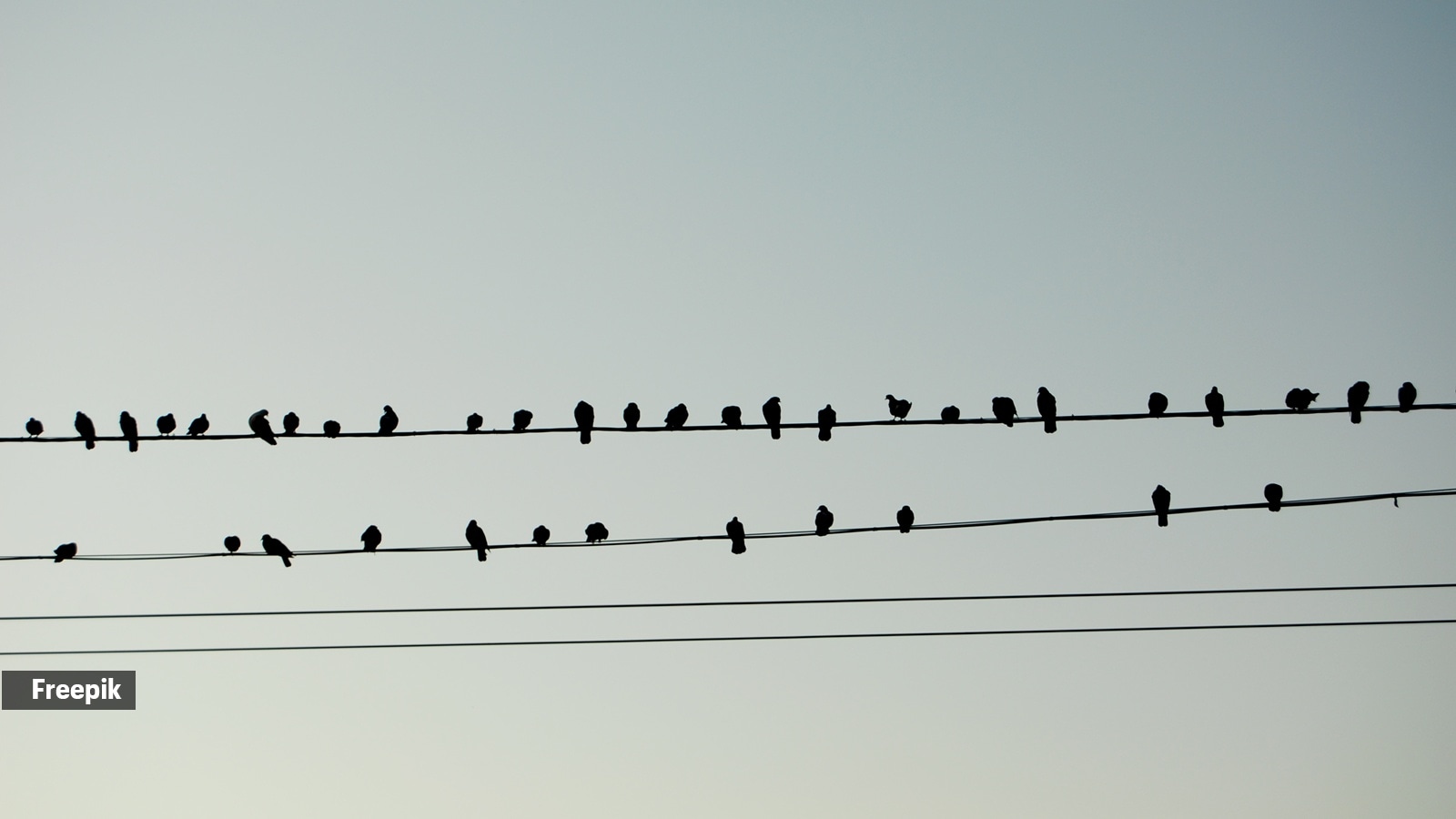📣 For more lifestyle news, click here to join our WhatsApp Channel and also follow us on Instagram
When birds chirp, scientists discover they might actually be talking to each other in code
Whether chirping over territory, flirting during courtship, or warning of predators, birds are communicating in ways that are mathematically, neurologically, and evolutionarily familiar to humans
 Scientists reveal that bird communication is more than mimicry (Source: Freepik)
Scientists reveal that bird communication is more than mimicry (Source: Freepik)For centuries, humans have been captivated by the melodic complexity of birdsong. Once dismissed as instinctual noise or mimicry, a growing body of research is now revealing that birds not only imitate speech, they may also follow linguistic principles strikingly similar to human language.
From the rainforests where parrots chatter to the hedgerows where robins sing, scientists are uncovering a profound connection between avian vocalisations and human speech. A series of recent studies are beginning to unravel just how birds “talk”, and how it’s far more sophisticated than we ever imagined.
Birds speak with structure, not just sound
A major study from the University of Manchester, in collaboration with Chester Zoo, recently explored whether bird communication follows the “Brevity Law”, a linguistic principle first proposed by George Zipf in the 1940s. It states that the most commonly used words in human language tend to be the shortest (like the, of, to). According to BBC Earth, the researchers applied this law to birdsong using a computational tool named ZLAvian, analysing over 600 recordings from seven species across 11 bird populations.
“Birds often have very few note types; individuals even within the same species can vary widely in their repertoires, and classifying notes is tricky too,” said the study’s co-author, Dr Rebecca Lewis, Conservation Scientist at Chester Zoo, to BBC Earth.
Despite the complexity and variability of bird vocalisations, the team concluded that frequently used bird phrases are consistently shorter, mirroring human language patterns. This breakthrough supports the theory that brevity and efficiency in communication may be a universal linguistic principle, not just a human construct.
 A major study from the University of Manchester, in collaboration with Chester Zoo, recently explored whether bird communication follows the “Brevity Law” (Source: Freepik)
A major study from the University of Manchester, in collaboration with Chester Zoo, recently explored whether bird communication follows the “Brevity Law” (Source: Freepik)
Genetic and neurological parallels with humans
The implications go far beyond behaviour. Research from the University of Texas at Austin has shown that the syrinx, the bird’s vocal organ, shares deep genetic programming with the human larynx. This rare developmental homology suggests a shared evolutionary blueprint for complex vocal communication.
Meanwhile, neuroscientists at NYU found that in species like budgerigars, specific neurons control vocalisations similarly to how the human brain regulates speech. These birds can adjust pitch and tempo with precision, indicating that their vocal systems are not just reactive but cognitively driven.
Beyond parrots: Are more birds capable of ‘talking’?
While parrots like the famous African Grey “Alex” have demonstrated not just mimicry but conceptual language use—labelling colors, objects, and even inventing new words (“banerry” for banana-cherry)—other species are beginning to show similar potential.
Songbirds, starlings, and even corvids like crows and ravens have shown complex communication systems. The ongoing question for scientists is not just if birds can mimic, but whether they comprehend the context of what they “say.”
The universal grammar of nature?
As mathematical biologist, Dr Tucker Gilman, who is also lead author of the latest study notes, humans have long romanticised birdsong as a secret “language of birds.” But what was once myth is now increasingly backed by science. Many of the genes and brain regions involved in birdsong development are identical to those in human speech processing.
According to Dr Lewis, the development of ZLAvian may open the door to broader understanding: “We hope ZLAvian will make it easier for other researchers to explore these patterns in more birds but also other animals in the future.”
📣 For more lifestyle news, click here to join our WhatsApp Channel and also follow us on Instagram






- 01
- 02
- 03
- 04
- 05





















